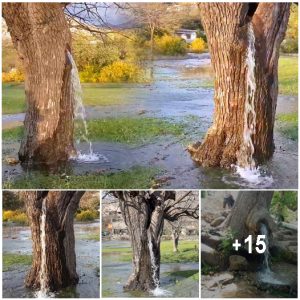Conophytum pageae is a cute little succulent known as Lips Plant, Cone Plant, Button Plant, or Dumplings due to its unique shape and growth habit. It is an excellent choice for beginning gardeners because it is easy to grow if given the proper care.
Description
C. pageae is a tiny plant that grows in rocky soil and outcroppings in southern Namibia and the Cape provinces of South Africa. This type of succulent is an evergreen member of the Aizoaceae family, commonly known as the Ice Plant family, showcasing the diverse beauty of these remarkable plants.
It is named after Mary Maud Page, an English botanist who relocated to South Africa in 1911 to study the plant life there.
Conophytum pageae grows in clusters of individual plants or stemless “bodies” that are fig-shaped or inversely conical and about 1” (2.5 cm) high. Each body is made up of two fused, dull, gray-green leaves with a puckered fissure at the top, ringed in red, resembling two lips.
These little plants go dormant during the late spring and summer. During that time, the outside leaves begin to shrivel as two new leaves form inside. The old outer leaves become thin and dry during dormancy and function to protect the young leaves as they grow.
When the plants resume their growth in the fall, single, daisy-like flowers bloom nocturnally from the red-ringed fissure. Each highly fragrant, yellow, rosy-pink, or white flower develops into a small capsule with many tiny seeds.
Their active growing period extends through the winter months, and then they move toward dormancy again in the spring. Conophytums are very slow-growing succulents that can live well over 50 years.
Uses of Conophytum pageae
Although plants in the Conophytum genus are thought to have sedative properties from a mesembrine alkaloid, their uses extend almost exclusively to the horticultural trade.
These appealing little succulents are hardy and can be grown outside in warm regions in rock gardens, alpine gardens, stone walls, and containers. Indoors, they make excellent houseplants if given the proper care.
Within the last decade, they have been illegally poached in South Africa, and some populations have almost been eliminated. They are not endangered, however, since they are widespread, and measures have been taken to protect these unusual succulents.
Care for Conophytum pageae
Light
Conophytums love bright light, but not direct, harsh, afternoon sun that can burn their tissues. Set them in a bright window out of the direct sun, or only give them direct morning light from a south or west-facing window.
Temperature
These plants can handle a range of temperatures from very hot to almost freezing. They can grow in temperatures down to 35° F (1.6° C) and are hardy in USDA zones 10 and 11.
Humidity
Conophytums are native to dry areas in Africa, so they grow best in low to medium humidity and appreciate good air circulation.
Soil
A porous, gritty potting mix is best for these little plants. For excellent drainage, you can use a cactus or succulent mix amended with perlite or sand.
Fertilizer
Conophytum pageae only needs to be fertilized once a year with a dilute, all-purpose fertilizer when new growth begins in the fall.
Water
During the fall and winter, when the plants are actively growing, they will need to be watered thoroughly when their soil dries out.
Allow the water to run through the pot and out the drainage holes until it drains completely, and be sure to empty any excess water from the tray or dish underneath.
Propagation
Conophytums can be propagated by seed or division in late summer before their growth season starts. Sow the seeds in a loose succulent mix, cover them with a thin layer, and keep them moist until they sprout in two to four weeks.
Divide the clumps by cutting or separating several plants from a larger cluster, replanting them, and keeping them moist until they root.
Pests and Diseases
Fortunately, these plants are not prone to many pests or diseases. The main pests to watch out for are root mealybugs that will suck the juices out of the plant’s roots.
The most effective control method is to unpot the plants, thoroughly wash off the soil and prune away any dead roots.
Soak the roots in a dilute insecticide, then repot the plants in a clean pot in fresh soil mixed with some diatomaceous earth to prevent re-infestation.
The primary disease that infects Conophytums is root rot from overwatering. Therefore, ensure the soil is completely dry before watering, and never allow the roots to sit in water.





